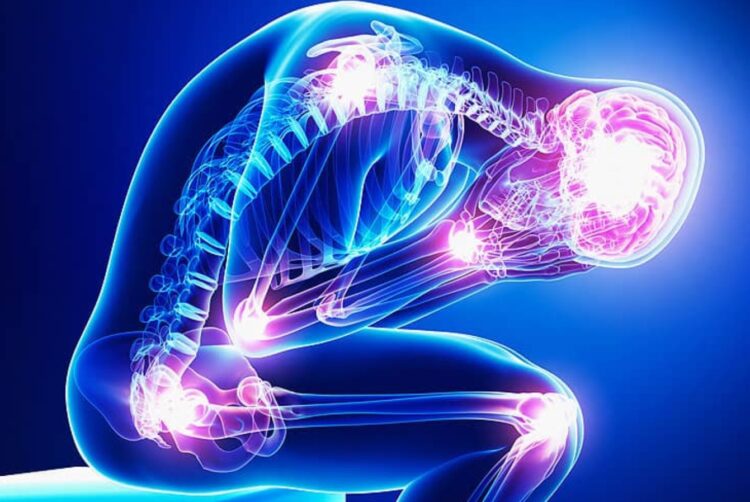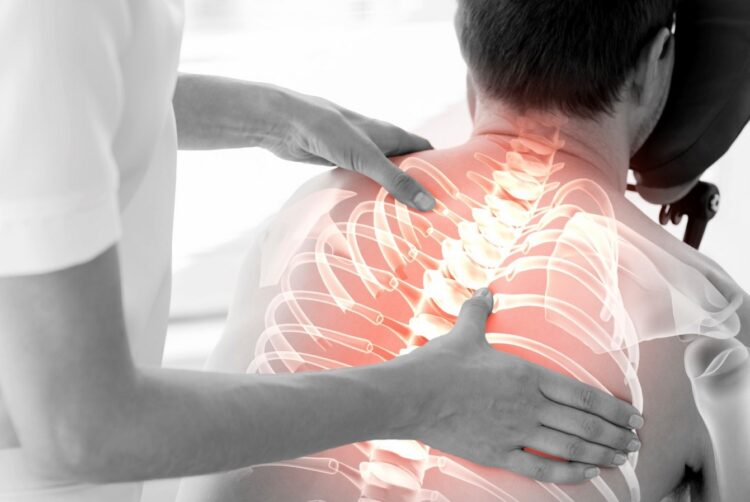
Physical pain is a subjective symptom, an unpleasant feeling by which we are alarmed that something might be wrong with our body, and it is a result of intensive or damaging stimuli. It is a normal part of life which we experience starting from a very early age, all the way into our older years – until death. What is interesting about it as a phenomenon, is that sometimes it can be cause of an alarm, and sometimes it is perceived as an expected outcome of certain actions. Feeling physical pain is a personal experience which is vital for survival as it alerts us of potential diseases and injuries, it will motivate us to stay away from dangerous and potentially damaging situations and helps protect (or spare) a body part while it is healing.
Typically, it is a major symptom in many medical conditions and can impact the quality of life and a person’s general functioning, as well as their mood and behavior.
What to do When You Experience Pain?

Whenever it appears, what is especially important is to note its characteristics and what are the other accompanying symptoms. It should be evaluated whether it is something you have or haven’t experienced before, whether the sensation is rather severe or mild, whether it drastically impairs everyday tasks and what are the other symptoms that accompany it. Most times, it is acute and it can be managed by painkillers and in others, the underlying cause has to be eliminated in order for it to go away or start healing.
Sometimes, pain becomes chronic – meaning it lasts a long time. Even though there are many ranges varying from days to a year, it is quite arbitrary defining it. It is said that chronic pain is one that extends beyond the time it is expected to go away. Acute pain, which is usually short lasting, resolves as the tissue heals or the painful stimulus is removed, but sometimes it can evolve to chronic, which then, could appear occasionally (called intermittent), or it can be constant. It has been said that chronic pain becomes disease in itself. It is seen in degenerative processes in the body, cancers and other chronic and progressive illnesses.
What is Neuropathic Pain?

Neuropathic pain is caused by damage or disease which affects the nerves, and it is likely to be chronic and progressive. It is described as a shooting or burning feeling in certain areas of the body. Often, it can be accompanied by tingling, numbness and/or loss of sensation. Nociceptive pain is caused by damage to tissue and it can be achy, pulsating or sharp, and it’s commonly caused by tissue injury. It can be visceral – vague, feels like pressure or squeezing, and occurs when there is some sort of damage to the internal organs.
Also, it cannot always be specifically located and it sometimes it can be “referred”. Referred pain is when a heart attack feels like pain in the left arm. The other type of nociceptive pain is somatic pain – the pain in the skin, muscles, joints, connective tissues, and bones – one which is easier to locate and it feels like gnawing and aching. Radicular pain happens when a spinal nerve is compressed or inflamed, and it can irradiate along the whole nerve.
When to See a Pain Specialist?

So naturally, the question arises when should you see a doctor if you are experiencing pain? Broadly speaking, if you know the cause and it is rather common and benign – like a papercut, scraping your knee when falling down, waking up with a headache after drinking alcohol, or falling asleep on your hand – there is no need to panic, as it is likely that it will go away on its own, for example, when it heals, or after taking a painkiller. Also, if it lasts the amount of time you know it should last (or the amount of time it usually lasts), there should be no need for particular concern.
However, if a certain pain is a type you haven’t experienced before, or it is sharp, severe, limits your movements, makes you very uncomfortable and restless, disrupts your sleep, or impairs your daily life, then you should definitely see a doctor. If you get seriously injured, regardless of your pain tolerance or the intensity of pain, you should seek medical attention right away.
If the pain you are experiencing is accompanied by other symptoms like sweating, substantial bleeding, deformity, swelling, trouble breathing or shortness of breath, overwhelming sense of anxiety or panic, weakness, significant fatigue, lightheadedness/dizziness, stiff neck, high fever, increased heart rate or blood pressure, vomiting, nausea, or any other noteworthy or atypical accompanying symptom – seek medical help immediately as it might mean that it is something serious and/or life-threatening. You can visit the emergency room or your GP who can further refer you to a specialist.

In the same manner, if your chronic pain worsens or is simply no longer bearable, it is time to seek a more long-term solution. If you are dealing with chronic pain, specialists like the ones at sydneyspinepain.com could help you reduce and manage the pain, and ultimately improve your quality of life. Back pain is very common in the population, particularly in middle aged and elderly people, and can result from many conditions; muscle or ligament strain, protruding or ruptured intervertebral disks, arthritis, osteoporosis, previous injuries or surgery, damage to the nerves, cancer or some very rare diseases. It affects most people at some point in their lives. Age is most certainly a risk factor, as are lack of exercise, poor posture, obesity, hereditary factors, and many others. Sometimes it may go away on its own, and in other cases it requires medical attention. It should be managed by a multidisciplinary team and many factors should be addressed during the treatment.
When it comes to pain, the underlying problem, which is frequently identifiable, has to be resolved or addressed in some way so that it may go away or lessen. In very rare cases, it doesn’t have an explanation or identifiable underlying cause, but in most cases it is treatable or manageable.
DISCLAIMER: This website does not provide medical advice. The information, including but not limited to, text, graphics, images and other material contained on this website are for informational purposes only. No material on this site is intended to be a substitute for professional medical advice, diagnosis or treatment. Always seek the advice of your physician or other qualified health care provider with any questions you may have regarding a medical condition or treatment and before undertaking a new health care regimen, and never disregard professional medical advice or delay in seeking it because of something you have read on this website.











